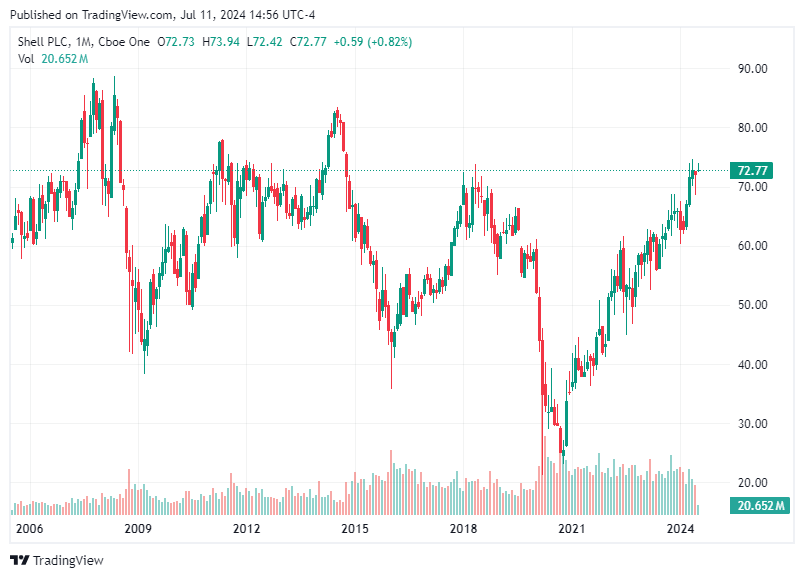International Energy Agency Revises 2025 Oil Market Projections
IEA Revises Oil Market Projections for 2025: A Detailed Analysis.

Disclaimer: The information provided in this article is intended for general informational purposes only and should not be construed as financial or investment advice. The views expressed herein do not necessarily represent the views of any organization, and the data presented may be subject to change. Readers are encouraged to conduct their own research and consult with a qualified professional before making any investment decisions.
Real-time information is available daily at https://stockregion.net
The International Energy Agency (IEA) has recently revised its oil market projections for 2025, marking significant adjustments in both demand and supply forecasts. According to the latest report, the IEA has reduced its forecast for oil-demand growth while increasing its estimates for supply. This dual adjustment suggests an impending surplus in the oil market, aligning with the IEA’s predictions of a glut within this decade. The Organization of the Petroleum Exporting Countries (OPEC) has published an optimistic view of the global oil market, presenting a slightly higher global economic growth forecast for 2024.
OPEC's latest Oil Market Report reflects a slight upward adjustment in the global economic growth forecast for 2024, now projected at 2.9%. This revision is attributed to stronger-than-expected performance in key economies such as Brazil, Russia, India, and China, along with a recovery in the eurozone. OPEC has maintained its oil demand growth forecast at 2.2 million barrels per day (mbd) for 2024, suggesting sustained usage supported by economic growth and increased air travel. This positive outlook from OPEC provides a glimpse into how major oil-producing nations view the future of oil demand.
On the supply side, OPEC has kept its non-OPEC+ liquids supply growth estimate steady at 1.23 million barrels per day for 2024 and 1.10 million barrels per day for 2025. The primary drivers of this growth are expected to be the United States, Canada, and Brazil. In June, OPEC+ crude production fell by 125,000 barrels per day to 40.8 million barrels per day, which is 2.3 million barrels per day below OPEC's projected demand. This production restraint, coupled with solid demand, suggests a potential supply deficit in the coming months.
OPEC has also highlighted the impact of the U.S. Federal Reserve's monetary policy on the oil market. The Fed's hawkish stance and high interest rates have led to increased capital costs, thereby limiting investment in upstream exploration and production. A stronger U.S. dollar, driven by these high interest rates, has raised prices for oil and other commodities. Despite these challenges, OPEC remains optimistic that the Fed might cut rates later this year, potentially easing these pressures.
Contrasting Projections: OPEC vs. IEA
The projections of OPEC and the IEA present a notable contrast. While OPEC anticipates robust demand growth, the IEA adopts a more conservative stance, forecasting growth of only 960,000 barrels per day in 2024. The IEA also predicts that global oil demand will peak at 106 million barrels per day by 2029, indicating a significant shift toward greener energies and a decline in oil use for road transportation. This divergence in outlook underscores the complexities and uncertainties inherent in forecasting the future of the oil market.
The U.S. Energy Information Administration's (EIA) weekly inventory reports play a crucial role in shaping oil price dynamics. Recent reports have indicated a second consecutive week of declining U.S. crude oil inventories, which, alongside increased refinery capacity use, suggests robust demand. This inventory drawdown has supported oil prices, pushing them to around $82 per barrel. Analysts are closely monitoring these inventory trends, looking for sustained reductions to confirm expectations of stronger summer fuel demand.
Looking ahead, OPEC's steady demand forecasts, combined with potential supply constraints, provide a supportive backdrop for oil prices. However, several factors could influence the market in the coming years. Geopolitical tensions remain a significant concern, as conflicts or sanctions involving major oil-producing countries could disrupt supply chains and impact global oil prices. Additionally, economic uncertainties, including fluctuations in global economic growth and changes in monetary policy, will continue to play a crucial role.
The underlying demand growth, particularly from transportation fuels and petrochemical production, is expected to sustain the market despite these challenges. Advances in technology and shifts toward renewable energy sources will likely influence long-term demand patterns, but oil remains a critical component of the global energy mix for the foreseeable future.
The recent revisions by the IEA and the optimistic projections from OPEC provide valuable insights into the future of the global oil market. While the IEA foresees a potential surplus due to adjusted demand and supply forecasts, OPEC's steady demand growth outlook suggests a balanced market supported by economic recovery and increased travel. The interplay of economic factors, geopolitical tensions, and technological advancements will shape the oil market in the coming years, making it essential for stakeholders to stay informed and adaptable.
Disclaimer: This article is for informational purposes only and does not constitute financial or investment advice. The information presented is based on available data at the time of writing and may be subject to change. Readers should perform their own due diligence and consult with a financial advisor before making any investment decisions.
Real-time information is available daily at https://stockregion.net


